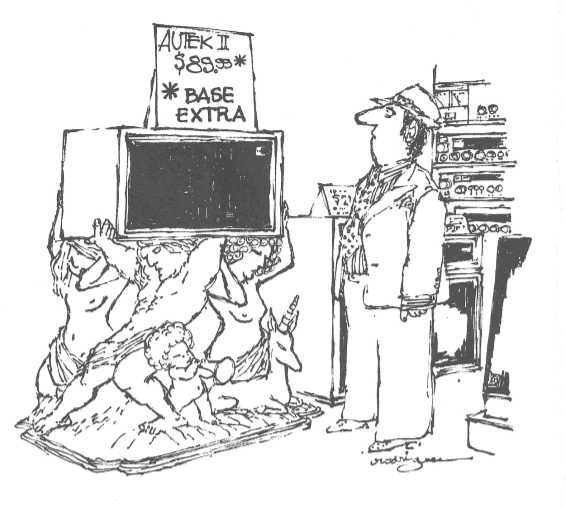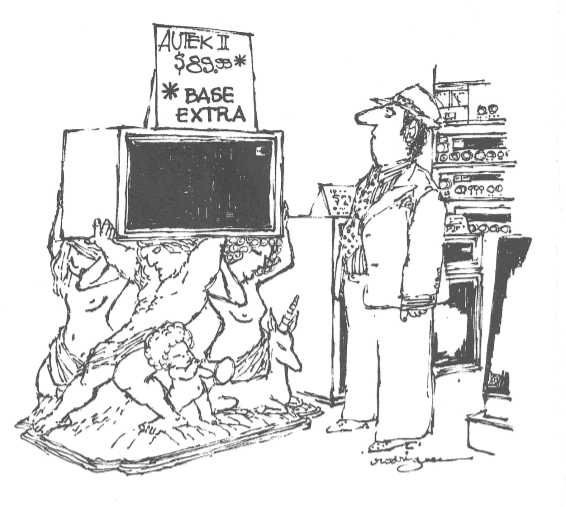
Rickie Lee Jones – Kicks
I have loved Rickie Lee Jones from day one; though the truth be known, early on probably more for the fact that she was the hot blond laid across Tom Waits’ hood on the cover of his album Blue Valentines. That love affair continued into her work as an artist, especially with her second album, Pirates, where I felt she had really found her voice. I must have played “Woody and Dutch on the Slow Train to Peking” a thousand times, frequently to the accompaniment of my darling, doting wife’s proclamation of “JESUS, COULD YOU PLEASE TURN THAT FUCKING RACKET DOWN!” Nevertheless, the love continued through Girl At Her Volcano and The Magazine, but she started losing me with Flying Cowboys. The magic seemed over for me, but a couple of unexpected changes in my listening habits started altering my conception. First, I changed jobs, where my radio would only pick up the local college jazz station, so I started listening to a shit-ton of classic jazz. And my wife forced me to attend a baby shower (of all things) where nothing but late-period Billie Holiday played non-stop—and I totally dug it!
A couple of years later, I’m in Tower Records, and pull a copy of RLJ’s new CD, Pop Pop, from the rack, and in a WTF! moment checked out the song list. A covers album? WTF! Rickie Lee’s really lost it—but I bought it anyway. My newfound love of classic jazz and quirky jazz singing had perfectly prepped me for this record. From Robben Ford’s beautiful acoustic guitar intro, to Charlie Haden’s magically lyrical bass line, and then Rickie Lee’s gorgeous voice singing “My One and Only Love”—she had me from hello! Sitting there stunned through that magical first song, as it faded to black, again came the shout from upstairs—“Dad. Dad! DAD!! Who was that?” “Uh…Rickie Lee Jones…” “Can I borrow that CD?” “Uh…sure!” (my wife is still not a convert.) So RLJ’s career has continued, with periods of original material albums mixed in with the occasional cover album; I found 2000’s cover album It’s Like This particularly compelling—“Show Biz Kids making movies of themselves, you know they don’t give a fuck about anybody else!” Needless to say, I have found the cover albums infinitely more interesting than her recent original output.
Unfortunately, the magic seems to be lost in her latest release, Kicks, which again has her singing her takes on another diverse group of tunes, from the likes of Bad Company, “Bad Company” (I’m not making this up!) to America’s “Lonely People”—which are both just plain awful. The heartfelt, soulful singing and quirky, spare arrangements that made her previous efforts so charming and immediate—are sadly MIA, from any point on this album. When she breaks into “Don’t Say No, It’s the End of the World”, it was definitely the end of the album for me. WTF? Seriously, I had to keep checking that the correct album was playing, because at very few points in the proceedings did the voice even sound like Rickie Lee Jones. RLJ at her best is irresistible; at her worst, highly forgettable. Seriously, unless you’re an absolute, die-hard completist, I’d pass on this one.
[I’ll echo Tom’s take on this one. I’m an occasional and occasionally-ardent fan of Rickie Lee, but this is dreadful. She’s made previous missteps with covers—her “Sympathy For the Devil” was bafflingly laughable, sounding like a dilaudid-drenched Shirley Temple doing “On the Good Ship Lollipop”. Her try at “The Weight” was, well, lightweight; her version of “Reason to Believe”—a song I’ve loved and sung for over forty years—made me lose belief…and so on. I’d say, “make your own jokes,” but in most of these cases, the jokes are already there. Yeesh. —Ed.]
The Other Side of Desire Records, CD/LP (download/streaming from Amazon, Tidal, Qobuz, Pandora, YouTube, Spotify, iTunes)

Nérija – Blume
The London jazz scene from across the pond has always garnered rather pale comparisons to anything going on here in the states; I’d be hard pressed to name more than a handful of English jazz musicians. And I actually have a fairly extensive jazz collection that spans the fifties through recent years. I could easily grab discs by Claire Martin (excellent English jazz singer on the Linn label), as well as discs from singer Stacey Kent—she’s American, but lives and records in England. Her husband, arranger and sax player Jim Tomlinson, is English, as well as the entire backing band on all of her albums, and they are absolutely lights out good! I also have many albums from John McLaughlin and Allan Holdsworth, although the latter two technically fall into more of the jazz fusion category. Aside from that—pretty much nada.
Nérija is a septet that’s been performing together now for about three years; they grew out of the individual players’ involvement in London’s Tomorrow’s Warriors. Which is a really innovative jazz music education and artist development organization; they’re currently helping to fuel the burgeoning jazz scene that’s suddenly become terrifically popular among young and hip London audiences. Blume has an incredibly swinging and cool vibe; at first listen, you could easily mistake this music for any of a number of offerings from the classic Blue Note catalog of the sixties. Oh, and did I mention that Nérija is—with the exception of bass player Rio Kai—an all-female ensemble? Or jazz collective, as they prefer to call themselves.
Nérija consists of Nubya Garcia (tenor sax), Sheila Maurice-Gray (trumpet), Cassie Kinoshi (alto sax), Rosie Turton (trombone), Shirley Tetteh (guitar), Lizy Exell (drums), and the aforementioned lone male Rio Kai (bass). The absence of a piano player is about the only thing that separates them from the makeup of more traditional jazz ensembles of yore. Most of the players slum in various other London bands on a nightly basis. Blume is an album of dizzyingly virtuosic straight-ahead jazz, with all of the sprawling, atmospheric extended-set pieces composed by various members of the band. While this is undeniably a big-time blowing session, the absence of the traditional piano role easily makes guitarist Shirley Tetteh’s exciting runs and fills the glue that cements this excellent album. Highlights: “Riverfest”, “Partner Lover Girlfriend”, “EU (Emotionally Unavailable)”. Recommended.
Domino Recording Company, 2-LP set on clear vinyl (download/streaming from Bandcamp, Tidal, Qobuz, Spotify)

Creedence Clearwater Revival – Live At Woodstock
It’s unbelievable that this year marks the 50th anniversary of Woodstock. And even more unbelievable that Creedence Clearwater Revival—until this year—were essentially considered as non-existent at Woodstock, unless, of course, you were there! Creedence was one of only a handful of acts on the bill to have already achieved substantial airplay and commercial sales by 1969. They didn’t appear in the movie or on the official soundtrack recording, because John Fogerty heard the tapes of their hour-long performance and felt they were substandard. Therefore, no CCR in the movie, no CCR on the record (actually, when they released Woodstock Volumes 2 and 3 a few years later, one Creedence song made it on the multi-LP sets, but too little, too late). It’s actually stunning, the number of groups who played at Woodstock, yet don’t appear in the film, and aren’t part of the legend and lore of the “Three Days of Peace and Music”. Like Janis Joplin, or the Grateful Dead. Speaking of the Dead, John Fogerty still blames them for the fact that Creedence ended up with a midnight slot on the night of August 17, 1969—the Dead set ran way longer than its allotted time—CCR getting on stage so late is part of the reason he felt fifty years ago that their performance was so forgettable.
If you’re a true Creedence fan, these tapes are legendary, and in this—their first official release—they’re given the kind of remastering treatment that you could only have dreamed of. The sound isn’t perfect, but it’s absolutely on par with the very best captured performances at Woodstock (hey, at least the tape didn’t run out midway through the set!). And the performances are incendiary to say the least—this is the live CCR album that true fans have all been waiting for! Originally slated to only be part of the massive Rhino Back To The Garden collection, it was eventually later decided to license the tapes to Craft Recordings to release it as a single disc CD and double LP. Making it much more attractive and affordable for most of us—not that ten CDs of live Woodstock is a bad thing, though!
I have a co-worker who’s a Creedence completist, and he pre-ordered this the moment it was available. He tells me that the two official CCR live discs—The Concert and Live in Europe—are dull and virtually lifeless compared to the Woodstock tapes. And Creedence plays all the hits (up to 1969, of course) here, burning through the one-hour set like men on a mission. Highly recommended.
Craft Recordings, CD/2-LP set (download/streaming from Amazon, Qobuz, Spotify)

Clairo – Immunity
Music is almost my religion, and I approach it with a great deal of seriousness. Which would make it very easy for me to simply out-of-hand dismiss a seemingly frivolous internet and YouTube sensation like Clairo and her debut album, Immunity. Without a judge and jury. Her YouTube videos have had tens of millions of views, and the music is generally described as “Bedroom Pop” (a label that Clairo dismisses). Bedroom Pop, according to the Urban Dictionary, is “characterized by its lo-fi quality and contemplative themes, sharing elements of other indie-pop genres such as shoegaze, dream pop, jangle pop, and emo”. Her songs do seem to have a very dreamy and contemplative quality to them, for sure. I pride myself on generally being reasonably up to date with current musical trends, but I have to be brutally honest here: I had to look those genres up, although “dream pop” and “jangle pop” almost seem self-explanatory.
Clairo’s (her given name is Claire Cottrill) dad had a number of music industry connections through his business dealings. And even though Clairo was actively being courted by a number of major labels after her internet success, she eventually signed with the Fader label her dad had serious connections with. She’s been openly accused by other indie artists of benefiting from nepotism, and of being an “industry plant”. In other words, they’re accusing her of being a mainstream industry-backed artist marketed and presented as an indie artist—solely for the feel-good vibe and to sell more records. Getting a break in the music industry is extremely tough sledding; my daughter has been trying to break through for years with only a modicum of success. Naturally, I fully understand the deep level of dedication it takes and the difficulty of ever truly making it. Check out Clairo’s website; she’s in the midst of a national tour that’s taking her to some impressive venues in most major cities—so let the nepotism theories roll on!
All of that said, I find the music here a totally mixed bag, though some of it is actually surprisingly cerebral and enjoyable. The record was produced by Rostam Batmanglij (Vampire Weekend), and has a much higher level of production than seen in any of her previous work—though not so overproduced as to take it into the realm of adult contemporary music. Immunity is basically a synth-pop affair with guitars, keys and a drum machine on most songs, and Clairo plays some of the instruments herself—it’s definitely lo-fi, but not nearly so much as the YouTube stuff. It’s a love-hate situation, though, for me—while I do find some of the songs emotionally engaging, there are aspects that are less gripping. Like when she uses a vocoder to alter the sound of her actually pleasant voice to something not at all dissimilar to say, Britney Spears. Blechh! Clairo would probably have an aneurysm if she found herself compared to Queen Britney in a review, and her very passable voice doesn’t need augmented in a way that makes it downright unpleasant to listen to. YMMV—if for no other reason, at least you’ll know whether to encourage your kid who’s making music videos in her bedroom.
Fader Records, CD/LP (download/streaming from Amazon, Tidal, Qobuz, Spotify)

Susanna Mälkki/Helsinki Philharmonic Orchestra – Bartók: The Wooden Prince/ The Miraculous Mandarin Suite
This new disc of Béla Bartók’s early symphonic works is notable for two reasons: Firstly, both The Wooden Prince and The Miraculous Mandarin (along with the early opera Bluebeard’s Castle) are stylistically unlike anything else in Bartók’s canon of works. These works are presented in a compositional style more closely related to the late Romantic period than any of the more angular and abstract works of Bartók’s later period. Where his works took on many of the Hungarian folk influences he was so strongly attracted to. Secondly, Finnish conductor Susanna Mälkki makes her debut with the Helsinki Philharmonic Orchestra on the BIS label; she’s undeniably one of the brightest stars currently in the classical world. She presently serves as the Chief conductor of the Helsinki Philharmonic Orchestra, who perform at the acclaimed (and brand new!) Helsinki Music Centre, where this outstanding set of performances was recorded. In her spare time, Susanna Mälkki slums as the principal guest conductor for the Los Angeles Philharmonic. Those urban Angelinos sure seem to love their Finnish conductors!
And if I may be so bold as to proffer Thirdly, it’s because this is such an incredibly dynamic and well-recorded performance of these infrequently programmed works. If you can get your hands on the excellent BIS SACD disc, that’s definitely the route to go for the very highest level of aural satisfaction. Through my Yamaha BDA-1060 universal player, the opening crescendo in the first movement of The Wooden Prince is staggeringly dynamic, and offers an incredibly realistic acoustic representation of the Helsinki Music Centre in my listening room. That said, if you’ve abandoned spinning discs and are more into high-res streaming, both Qobuz and Tidal offer this performance at 24/96 PCM sound, which isn’t too shabby either. The CD layer of the SACD disc (or 44.1 FLAC or WAV) is actually quite good, as well, but you’ll want high-res sound to get the most satisfying sound quality, which this title delivers in spades!
Susanna Mälkki’s readings of these works is very lyrical here; if you’re looking for a more muscular interpretation, try Boulez on DG. If this disc is indicative of what we can expect from this outstanding orchestra and conductor, their future efforts on BIS should not disappoint. Very highly recommended!
BIS Records, CD/SACD (download/streaming from Amazon, Tidal, Qobuz, Spotify)


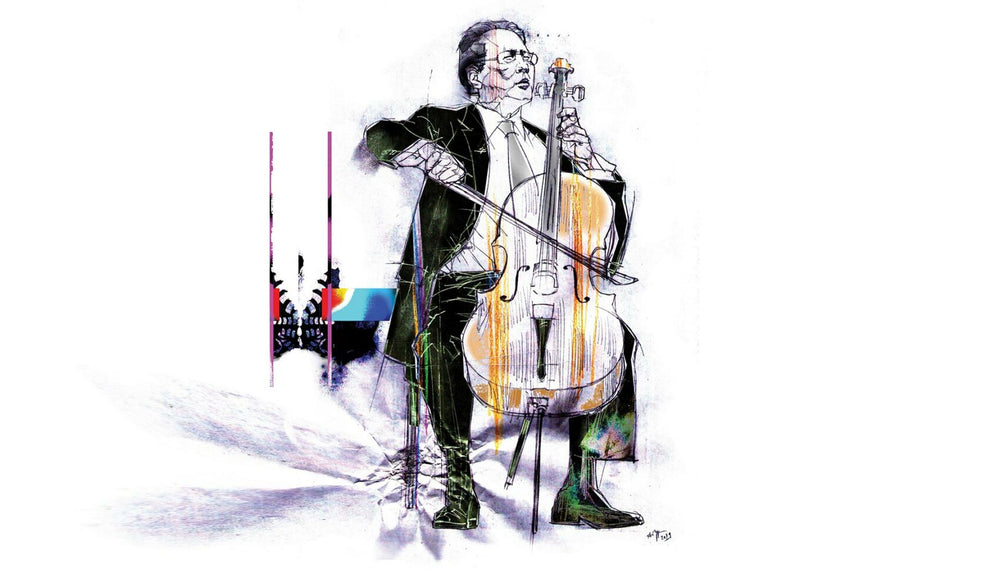









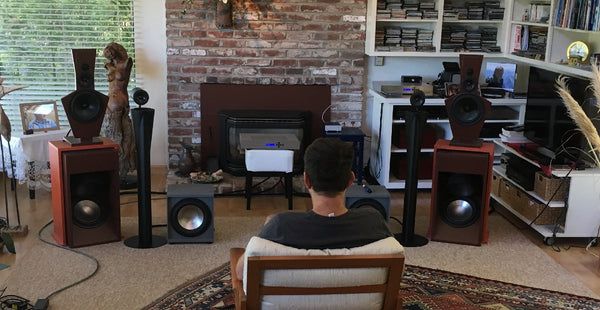
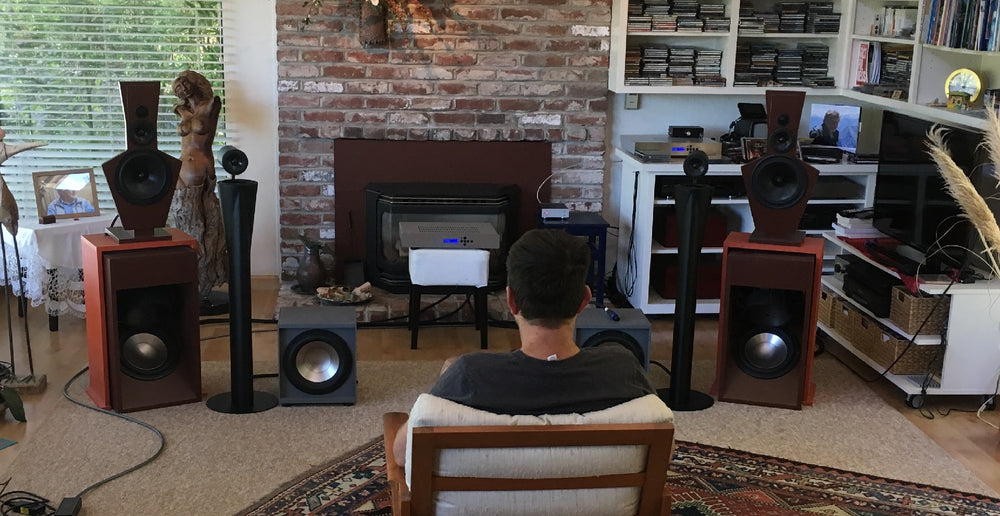
















 The bottom of all of the cups were fitted with ¼” diameter steel ball bearings bonded into recesses machined into the bottom of the cups; therefore, assuring a three-point contact.
The bottom of all of the cups were fitted with ¼” diameter steel ball bearings bonded into recesses machined into the bottom of the cups; therefore, assuring a three-point contact.
 Here we see epoxy resin being blended with #9 lead shot in a Hobart mixer just before being poured into the undersides of the main plinth and drive motor support bases.
Here we see epoxy resin being blended with #9 lead shot in a Hobart mixer just before being poured into the undersides of the main plinth and drive motor support bases.
 This is the underside of the sub-base for the VPI double motor flywheel drives, ready to be filled with the epoxy/lead matrix.
This is the underside of the sub-base for the VPI double motor flywheel drives, ready to be filled with the epoxy/lead matrix.
 This is the underside of the main turntable plinth, ready to be filled with the epoxy/lead matrix.
This is the underside of the main turntable plinth, ready to be filled with the epoxy/lead matrix.

 The next step in getting the Minus K properly set up to support the weight of the turntable is to bond ½” thick high durometer rubber to the center top plate on the Minus K unit. It is being bonded down with a polyurethane elastomer adhesive. This adhesive will remain flexible after it is fully cured.
The next step in getting the Minus K properly set up to support the weight of the turntable is to bond ½” thick high durometer rubber to the center top plate on the Minus K unit. It is being bonded down with a polyurethane elastomer adhesive. This adhesive will remain flexible after it is fully cured.

 Initially it was my thought to install a pair of air pressure gauges, one for each of the Kuzma Air Lines and a vacuum gauge for the Sota vacuum pump. After thinking about it, I thought the gauges really serve no purpose and look out of place, as it made the unit look too industrial, so I ended up removing them.
Initially it was my thought to install a pair of air pressure gauges, one for each of the Kuzma Air Lines and a vacuum gauge for the Sota vacuum pump. After thinking about it, I thought the gauges really serve no purpose and look out of place, as it made the unit look too industrial, so I ended up removing them.

 After applying a layer of polyurethane adhesive to the top of the rubber blocks on the Minus K, I lowered into place the aluminum plate that will accept the plinth for the turntable. This plate has become part of the Minus K isolator.
After applying a layer of polyurethane adhesive to the top of the rubber blocks on the Minus K, I lowered into place the aluminum plate that will accept the plinth for the turntable. This plate has become part of the Minus K isolator.
 Immediately after applying the adhesive, the plate was lowered and accurately positioned squarely on top of the rubber pads on the Minus K isolator. The adhesive was then allowed to cure. I might add the following; the thin sheet metal box that came with the Minus K, protecting the inner workings from dust, debris, etc., has been replaced by a number of ½” thick aluminum plates that will not only serve the same purpose but be much more aesthetically pleasing.
Immediately after applying the adhesive, the plate was lowered and accurately positioned squarely on top of the rubber pads on the Minus K isolator. The adhesive was then allowed to cure. I might add the following; the thin sheet metal box that came with the Minus K, protecting the inner workings from dust, debris, etc., has been replaced by a number of ½” thick aluminum plates that will not only serve the same purpose but be much more aesthetically pleasing.
